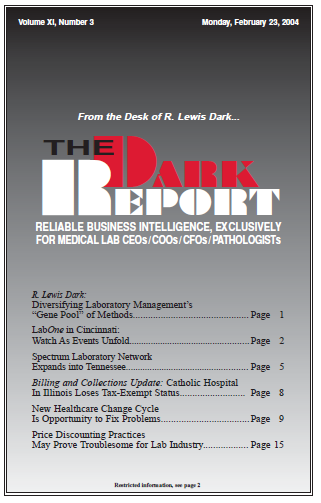CEO SUMMARY: Healthcare’s new cycle of change will be greatly influenced by geneomics, proteomics, the Internet, consumer-driven healthcare, and political decisions that affect the Medicare and Medicaid programs. The launch of a such a new cycle of change presents the laboratory industry with an opportunity. Timely input with key decision makers can insure that the …
New Healthcare Change Cycle Is Opportunity to Fix Problems Read More »
To access this post, you must purchase The Dark Report.


